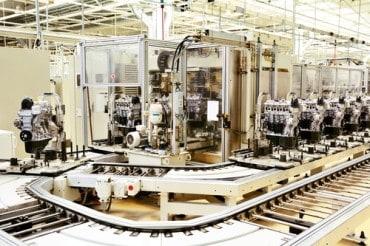
A cloud-native architecture provides a way for businesses to build new CI applications that incorporate modern analytics.
Increasingly, cloud-native is the architecture of choice to build and deploy AI-embedded continuous intelligence (CI) applications. A cloud-native approach offers benefits to both the business and developers.
How is this achieved? Cloud-native CI applications are a collection of small, independent, and loosely coupled services. At its core, a cloud-native architecture makes use of microservices and containers that use cloud-based platforms as the preferred deployment infrastructure.
See also: Infrastructure Architecture Requirements for Continuous Intelligence
Microservices provide the loosely coupled application architecture, which enables deployment in highly distributed patterns. Additionally, microservices support a growing ecosystem of solutions that can complement or extend a cloud platform. Cloud-native platforms with containers and serverless deployment provide the application platform and tools to make use of a microservices architecture.
Another aspect of a cloud-native deployment is the use of serverless computing. Serverless computing is a cloud-computing execution model in which the cloud provider runs the server and dynamically manages the allocation of machine resources. From a CI perspective, serverless is an event-driven environment in which containers are loaded and executed based on some condition being triggered. That condition might be an API call or the time of day.
Using an architectural approach that embraces these technologies, businesses can easily move workloads to the most appropriate platform (on-premises, cloud, multi-cloud) at any time. Additional benefits of using a cloud-native architecture for CI applications include:
Faster development and deployment: Time to market is a critical differentiator in today’s marketplace. Cloud-native applications using modern DevOps techniques allow businesses to automate many aspects of application development, testing, and deployment. As a result, businesses can quickly create new applications and rapidly deploy them. Thus, they can react to market changes and meet changing customer priorities.
Reduced costs: Cloud-native applications benefit from containerization. Why? Containers make it easy to manage and secure applications independently of the infrastructure that supports them. Increasingly, businesses are using Kubernetes to manage containers and resources in the cloud. When the use of Kubernetes and containers are combined with enhanced cloud-native capabilities such as serverless deployment, businesses can run dynamic workloads and pay-per-use for compute time in milliseconds. This ultimate flexibility in pricing is enabled by cloud-native.
Ease of management: Cloud-native offers ways to make infrastructure management simpler. For example, serverless computing platforms let businesses upload code in the form of functions, and the platform runs those functions without having to manually provision cloud instances, configure networking, or allocate enough storage. Serverless takes care of it all.
Flexibility to incorporate new technologies: Businesses need to keep pace with rapid changes in the field. That may require adding new analytics methods to enhance the capabilities of a CI application. For instance, a CI application to support customer service hub agents might want to incorporate different voice capabilities (e.g., speech to text features and vice versa using newly available natural language processing routines). A cloud-native architecture would use APIs to easily connect different (and new) analytics solutions offered as microservices.
Extensive use of provisioning automation: Unlike the traditional applications where the resources are physically provided, cloud-native applications can automatically provision resources. They facilitate on-demand, self-service provisioning and automate the releasing of compute and storage resources when they not being used.
High levels of resiliency: CI applications that make use of AI for real-time analysis of streaming data deliver critical insights. They must be highly available. Application downtime can have serious consequences. An offline fraud detection application will not be able to stop that one bad transaction, or an offline predictive maintenance application will miss the telltale signs of a part failure leading to the shutdown of a production line. Cloud-native applications are inherently resilient to failure as they can automatically handle outages, enable corrective actions, and shift workloads.
Taking these benefits together, it is clear that a cloud-native architecture provides a way for businesses to build new CI applications that incorporate modern analytics. The bottom line is that while event-driven architectures and reactive programming models have been employed in the past, the move to cloud-native architectures with microservices, container-based workloads, and serverless computing is making them more practical and provides many benefits. Such an event-driven architecture offers resiliency, agility, and scalability. The result is that cloud-native CI solutions are both reactive and responsive.







